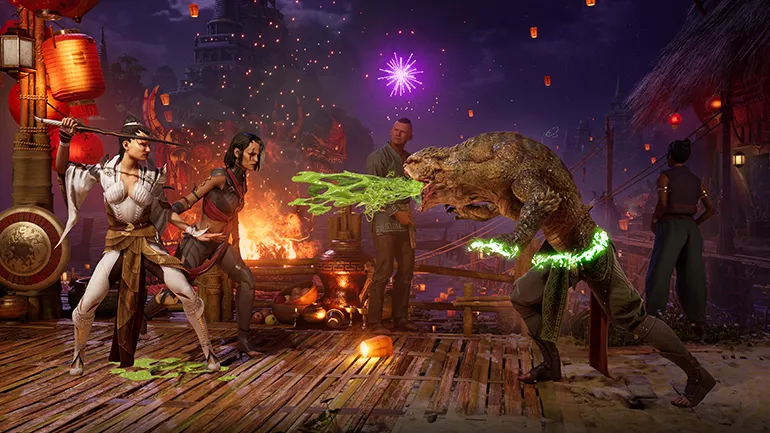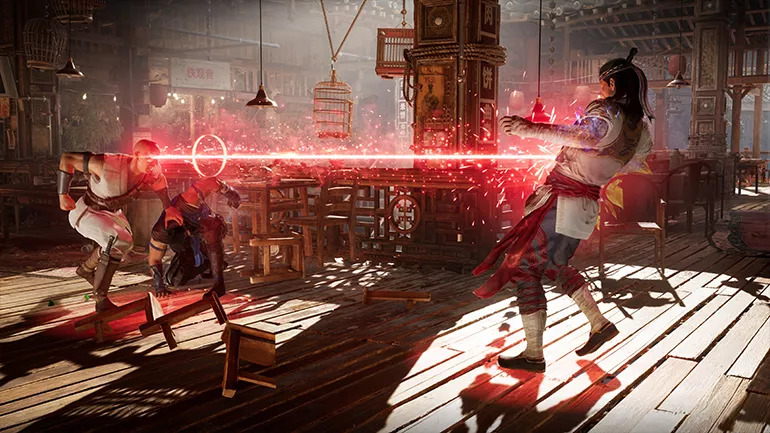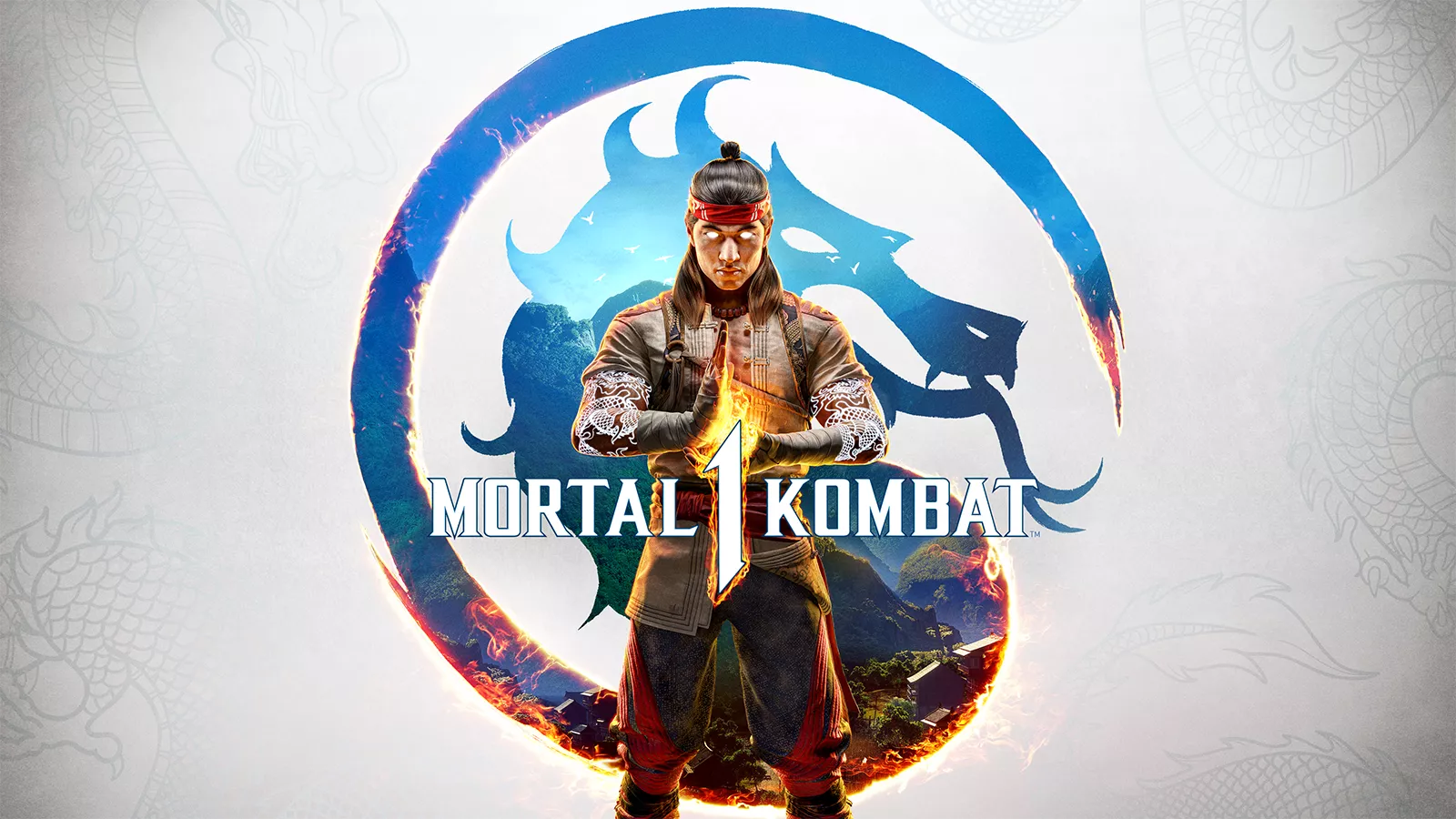Mortal Kombat 1 stands as a testament to the perfect fusion of Hollywood-style martial arts films and video games. Its story campaign flawlessly blends the two mediums, providing an immersive and highly entertaining experience. The game's visuals are nothing short of stunning, with a level of detail and commitment to seamlessness that truly enhances the fantasy world it creates. From the moment you start playing, Mortal Kombat 1 draws you in with its action-packed gameplay and keeps you hooked until the very end.
However, its commitment to teaching players the intricacies of its fighting systems truly sets this game apart. With a welcome and scholarly approach, Mortal Kombat 1 ensures that every move you make is a meaningful step toward self-improvement.
In the midst of an era where popular fighting games are pushing the boundaries of their respective generations, Mortal Kombat 1 stands out for its dedication to perfecting its gameplay mechanics and captivating storytelling. While other games in the franchise are making significant leaps forward, Mortal Kombat 1 opts for smaller yet impactful design changes that enhance the overall experience.
The game boasts a stunning new visual presentation, breathing new life into the beloved series. It's impossible to ignore the inevitable comparisons with its predecessor, Mortal Kombat 11, and ponder what has been gained and lost. However, only time will reveal the true merit of Mortal Kombat 1 as a standalone title.
Epic Narrative Journey
The key to Mortal Kombat's modern identity lies in its captivating single-player, cinematic story mode. With each installment, Mortal Kombat continues to weave an intricate tale that spans realms, mirroring the epic narratives found in contemporary blockbuster films. However, what sets Mortal Kombat apart is its ability to capture the essence of American-made martial arts action movies from the 1980s.
It transports players to an alternate universe where beloved classics such as Big Trouble in Little China and Bloodsport persist and receive the grandeur and spectacle of Disney-level production budgets. This enticing dream of a world where these beloved films are given the recognition they deserve is a powerful draw for fans and adds to the allure of Mortal Kombat's modern identity.
In Mortal Kombat 1, the game takes a fresh approach by serving as a narrative reboot. It presents a new perspective on the events that transpired in the previous games, essentially wiping the slate clean. While many characters and storylines are reset, one hero remains constant throughout these timelines: Liu Kang.
Having achieved godhood, Liu Kang has ascended to a higher level of power and influence. With his newfound abilities, he has taken it upon himself to shape a brand-new world according to his desires and preferences. This narrative reboot allows for a fresh and exciting take on the Mortal Kombat universe, with Liu Kang as the driving force behind this transformed reality.
Hollywood storytelling has always been known for its prioritization of entertainment value over narrative cohesion, and Mortal Kombat 1 is no exception. From the very first scene, trouble is set to unfold with the return of old faces, eager to sow familiar seeds of chaos. While the story itself may be a new retelling of the classic martial arts tournament between realms, the true joy lies in witnessing how these old faces take on new roles and how familiar stories are twisted.
Admittedly, there are some moments of silliness, such as Liu Kang's decision to reintroduce several of the series' villains in his new universe. However, there is a sense that the story is being told with a pleasant self-awareness, adding to the film's overall enjoyment.

The film's exceptionally life-like characters, brought to life by strong vocal performances from the cast, make the action-packed narrative a true pleasure to experience. Though there may be a slight exception in Megan Fox's unenthusiastic delivery, the overall quality of the performances is impressive. The movie follows a familiar formula yet still manages to captivate audiences with its mix of drama, comedy, and plot twists.
Viewers will cheer for some characters and booing others, fully engaged in the story. In addition, the film surprises with its stunning cinematography and remarkable fight choreography, adding an extra layer of visual appeal. All in all, this Hollywood popcorn movie satisfies all the necessary ingredients for an entertaining cinematic experience.
While Mortal Kombat 11 introduces some exciting new elements, not all hit the mark. The inclusion of ‘Test Your Might' sequences as QuickTime events feels tedious and takes away from the traditional minigame experience. However, it is worth noting that players can disable these sequences for a more streamlined gameplay experience.
Another disappointment is the replacement of the character selection system during the story mode with Mortal Kombat 1's Kameo character assist system. This change is missed by fans who enjoy choosing between different characters. Despite these shortcomings, the grand finale of the saga more than makes up for them with its incredibly over-the-top concept. It truly is a delightful and thrilling conclusion.
Dynamic Combat Systems in Mortal Kombat 1
Mortal Kombat 1 stays true to the unique game feel that the series is known for, while also making valuable improvements to its fighting mechanics. The familiar rigidity in fighter movement and actions is still present, creating a sense of precision and control. Additionally, the low-gravity jumps add an element of strategy to the gameplay. One of the defining features of Mortal Kombat 1 is its reliance on pre-determined ‘target' combo strings, which are executed effortlessly and allow players to unleash their creativity by seamlessly chaining them with special moves. These tweaks enhance the overall experience and ensure that Mortal Kombat 1 remains a thrilling and immersive fighting game.
The gaming community continues to embrace and encourage aggressive and offensive play in the latest releases. Characters now face the consequence of taking damage even if they successfully block their opponent's attack, ultimately rewarding the aggressor with more meter resources. This strategic shift not only intensifies the gameplay but also adds a layer of complexity for players who are adept at executing precise moves. Additionally, the introduction of a new up-block mechanic specifically designed to counter overhead attacks provides a fresh avenue for skilled and nimble players to turn the tables on their opponents, further enhancing the competitive experience.
The new systems in Mortal Kombat 1 bring a refreshing choreographed feeling to the fights, enhancing the detailed character animations that truly shine in the game's vibrant and visually stunning stages. These stages are full of life, boasting saturated colors that perfectly complement the game's Hollywood tone. While Mortal Kombat 11 explored the concept of multiverses, offering different variations for each character, Mortal Kombat 1 takes a unique approach by incorporating cameos, or Kameos, to introduce an intriguing spin on the assist fighter concept. This adds an extra layer of excitement and unpredictability to the battles, making each fight an exhilarating experience.
Assist Characters & Strategies
One of the unique features of the original Mortal Kombat game is the inclusion of assist characters. While players have a primary character to control during fights, they also have the option to call upon an assist character from a diverse roster of familiar faces from Mortal Kombat history. These assist characters can be summoned into the battle with a simple tap of a button, offering a range of three distinct abilities to complement the primary character's arsenal. This dynamic addition adds an extra layer of strategy and depth to the gameplay, allowing players to strategically utilize the assist characters to their advantage and enhance their fighting abilities.
Mechanically, special moves are a distinctive type of move that can be utilized even when your main character is in the midst of their own attack sequence. This feature makes them incredibly potent tools as they can seamlessly be incorporated into combo strings to amplify the potential damage or introduce effects that may not be accessible otherwise. These effects can range from freezing opponents, stunning them, or even launching them into the air. With such versatility, special moves become an essential component in maximizing the damage output and strategic advantage for any skilled player.
In my first dozen hours of playing the game, I have found that despite their simple execution, there is a great potential for experimentation with the many combinations of Primary and Kameo Fighters that can be made. It has been a satisfying endeavor to toy around in the game's practice mode, trying out different combinations and discovering useful applications for each Kameo character. The ability to mix and match fighters has added an exciting element to the game, allowing for endless possibilities and strategies.
In addition to their individual abilities, Kameo fighters also engage in universal manoeuvres that further enhance the excitement of their battles. Throws, super-move-like Fatal Blows, and the iconic Fatalities are just a few examples of these thrilling manoeuvres. Although these aspects may be considered superficial in nature, the visual flair and dynamism they bring to the fights are undeniably captivating. The inclusion of these universal manoeuvres transforms the battles into spectacular tag-team matches, elevating the overall spectacle and making the experience even more enjoyable for both the players and spectators.
Combat Mastery & Training
Despite expectations, Mortal Kombat 1 takes a different approach by not implementing a more user-friendly control scheme for those new to fighting games. However, the tutorials and training modes in Mortal Kombat 1 still deliver the same level of excellence that the series has consistently offered, as seen in its predecessor, Mortal Kombat 11.
This surprising decision may challenge newcomers, but the game's comprehensive tutorials and training modes ensure that players have the necessary tools to learn and master the game's complex mechanics. Mortal Kombat 1 proves that it values the integrity of its fighting system while still providing resources for players to improve their skills, making it a worthy addition to the renowned franchise.
The tutorials in Mortal Kombat 1 take a strategic approach by starting with the fundamental basics and gradually introducing new mechanics. The Kameo system and the up-block are taught alongside other advanced techniques, ensuring that players have a solid understanding of the game's mechanics before moving on.
The tutorials are organized into chapters that cover important concepts such as offense, defense, positioning, applying pressure, and even understanding and applying frame data. Interestingly, the game saves character-specific tutorials for last, choosing instead to emphasize broader concepts that can be universally applied. This approach allows players to gain a deeper understanding of the game's methods and theories rather than relying solely on memorizing patterns.
These comprehensive tutorials provide a unique opportunity to not only learn the mechanics of the game but also get a taste of multiple characters. Similar to the Story campaign, players are tasked with executing intermediate and advanced maneuvers for different fighters during lessons. Even for someone well-versed in fighting games, I found this experience invaluable.

It allowed me to fully acclimate myself to the nuances and playstyles of the characters in Mortal Kombat 1. I learned proper bread-and-butter techniques for fighters that I would typically avoid. This expanded my understanding of the game and gave me a newfound appreciation for the diverse roster of characters in Mortal Kombat 1.
The knowledge I gained about the character was not only beneficial for my own potential adoption of their traits and abilities, but it also provided me with a deeper understanding of their capabilities for future matchups in the game. This knowledge allowed me to strategize and plan my gameplay more effectively, ensuring better outcomes in battles and challenges. Additionally, the process of learning itself was rewarding, as the game rewarded me with in-game currency upon completion of lessons and chapters. This added incentive made the learning experience even more enjoyable and satisfying, motivating me to continue expanding my knowledge and skills within the game.
While the training tools in the game were generally comprehensive, one notable feature seemed to be missing – the ability to pin a selection of techniques from the movelist to the side of the screen during matches. This option, though seemingly simple, can prove to be immensely valuable when attempting to familiarize oneself with a new character. Being able to reference and practice specific moves in real-time would undoubtedly enhance the learning experience. However, it is hoped that this feature will be included in future updates and evolutions of the game, providing players with an even more immersive and effective training experience.
Mortal Kombat 1 offers more than just its iconic fighting experience. Adding Invasions, a single-player mode, adds new excitement to the game. This mode takes players on a board game-like dungeon-crawling RPG adventure filled with thrilling fights, challenging obstacles, and valuable rewards.
The environments are carefully designed for exploration, and the live-service element ensures there will always be something new to discover. Mortal Kombat 1 is a refined and confident addition to the series. The story campaign is engaging, and the fighting mechanics remain strong, showcasing the game's well-established identity. Moreover, the game's commitment to accessibility and approachability is commendable.





